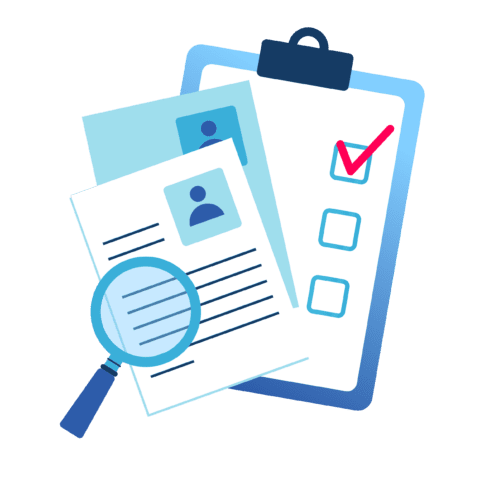Transitioning to a career in tech can seem daunting, but it’s entirely possible with the right strategy and resources. This guide provides step-by-step guidance, recommended learning paths, and tips to make your transition smoother. Read on to learn how to transition from a non-tech career to a tech role.

Your Step-by-Step Guide
1. Identify Your Goals
- Define Your Desired Role: Research different tech roles (e.g., web developer, data analyst, UX designer) to determine which one aligns with your interests and skills.
- Set Clear Objectives: Outline what you aim to achieve in your new career, such as specific job titles, companies you’d like to work for, or projects you want to tackle. Here is your career development guide.
2. Assess Your Current Skills
- Evaluate Transferable Skills: Identify skills from your current role that can transfer to a tech role, such as problem-solving, project management, or communication. It is possible to adapt any work experience to fit any role.
- Determine Skill Gaps: Figure out what technical skills you need to develop to qualify for your desired role.
3. Choose the Right Learning Path
- Online Courses and Bootcamps: Enroll in reputable programs like Treehouse’s Techdegree, which offers comprehensive, structured learning paths in various tech disciplines.
- Self-Study Resources: Utilize resources like online tutorials, YouTube channels, and coding practice websites.
4. Gain Practical Experience
- Build Projects: Apply what you’ve learned by creating projects. These can be personal projects, freelance work, or contributions to open-source projects.
- Internships and Volunteer Work: Gain hands-on experience through internships or volunteer opportunities in tech-related roles.
5. Network with Industry Professionals
- Join Tech Communities: Participate in online forums, attend local meetups, and join our Community Discord here at Treehouse!
- Seek Mentorship: Connect with professionals in your desired field who can provide guidance, feedback, and support.
6. Tailor Your Resume and Portfolio
- Highlight Relevant Skills and Projects: Emphasize the tech skills and projects you’ve worked on in your resume. Check out the 5-Step Career Checklist, in this checklist you have access to resume templates and instructions on how to network and build your portfolio.
- Create a Portfolio: Showcase your projects and code on platforms like GitHub or a personal website. Learn how to prepare your portfolio for the job hunt. Learn how to prepare your portfolio for the job hunt.
7. Prepare for Interviews
- Study Common Interview Questions: Prepare for both technical and behavioral interview questions. Learn how to nail every interview.
- Practice Coding Challenges: Use Treehouse to help you prepare for the technical aspect of your interview. Check out our latest blog, and master technical interviews with ChatGPT.

Recommended Learning Paths
Data Analysis
- Python & R: Focus on programming languages commonly used in data analysis.
- Statistics & Probability: Build a strong foundation in statistical methods.
- Machine Learning: Learn algorithms and techniques for data modeling and prediction.
Get certified in data analysis with a structured learning path and real-world projects.
UX Design
- Design Principles: Study the fundamentals of good design, including typography, color theory, and layout.
- Tools: Get comfortable with design tools like Sketch, Figma, or Adobe XD.
- User Research: Learn methods for conducting user research and testing.
Get certified in UX principles, research methods, and design tools, and build a professional portfolio.
Front End Web Development
- HTML & CSS: Master the structure and styling of web pages.
- JavaScript: Deepen your understanding of JavaScript to create interactive user interfaces.
- Responsive Design: Learn how to make web applications look great on any device using responsive design techniques.
Get certified and develop a deep understanding of front-end technologies through expert-led courses and projects.
Full Stack JavaScript
- Node.js: Get started with server-side JavaScript using Node.js.
- Express.js: Learn how to build web applications and APIs with Express.js.
- Databases: Understand how to work with databases like MongoDB or SQL.
- Frontend Frameworks: Gain proficiency in front-end frameworks like React or Vue.js to build complete web applications.
Get certified and gain comprehensive knowledge of JavaScript frameworks and tools through hands-on learning.
Python Development
- Python Basics: Start with the basics of Python programming, focusing on syntax and core concepts.
- Web Development with Django or Flask: Learn to build web applications using Python frameworks like Django or Flask.
- Automation and Scripting: Explore how Python can be used for automation and scripting tasks to streamline workflows.
- Data Analysis: Understand the basics of data analysis using Python libraries like Pandas and NumPy.
Get certified and learn Python fundamentals, web development, automation, and data analysis through structured courses and projects.

Tips for a Smooth Transition
- Stay Consistent: Dedicate regular time to learning and practicing new skills.
- Be Patient: Understand that transitioning to a new career takes time and persistence.
- Seek Support: Don’t hesitate to ask for help from mentors, peers, or online communities.
- Embrace Failure: View setbacks as learning opportunities and keep pushing forward.
Now you know how to transition from a non-tech career to a tech role! While a career transition is a journey that requires dedication, learning, and adaptation. By following these steps, leveraging your existing skills, and continuously expanding your knowledge, you can successfully make the switch and thrive in the tech industry.
Want to schedule a one-on-one career session with our Career Advisor? Start a free trial today.







